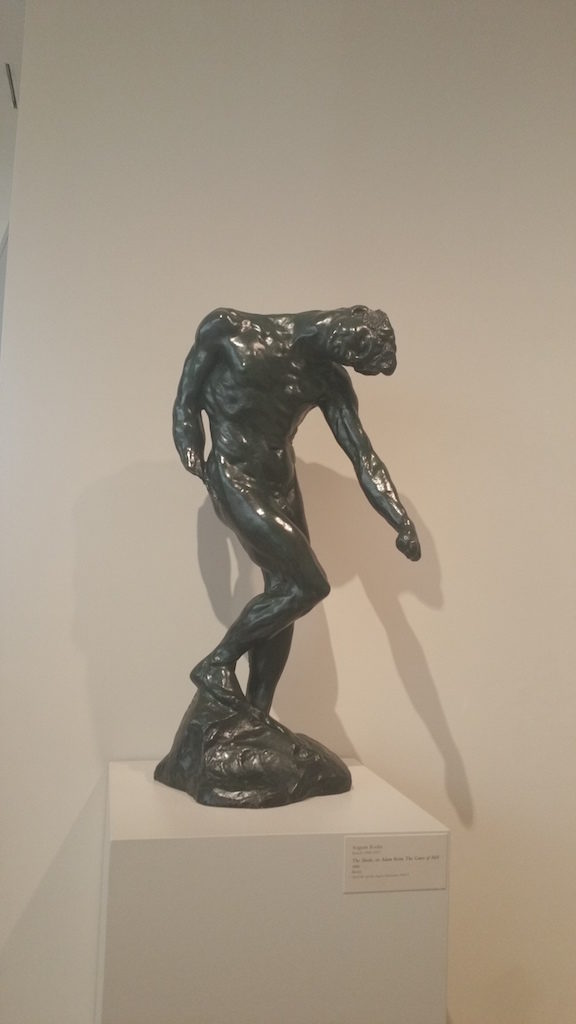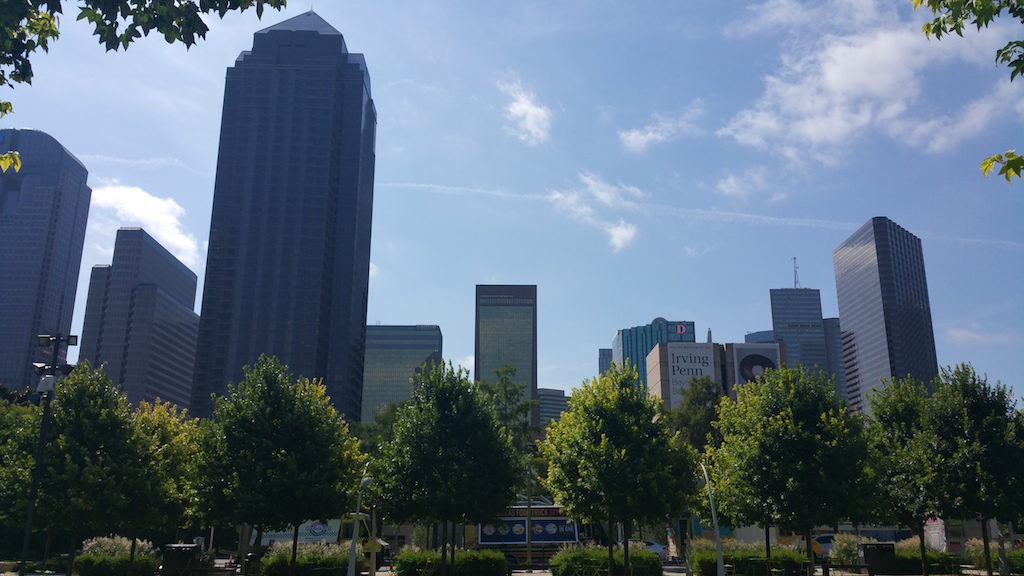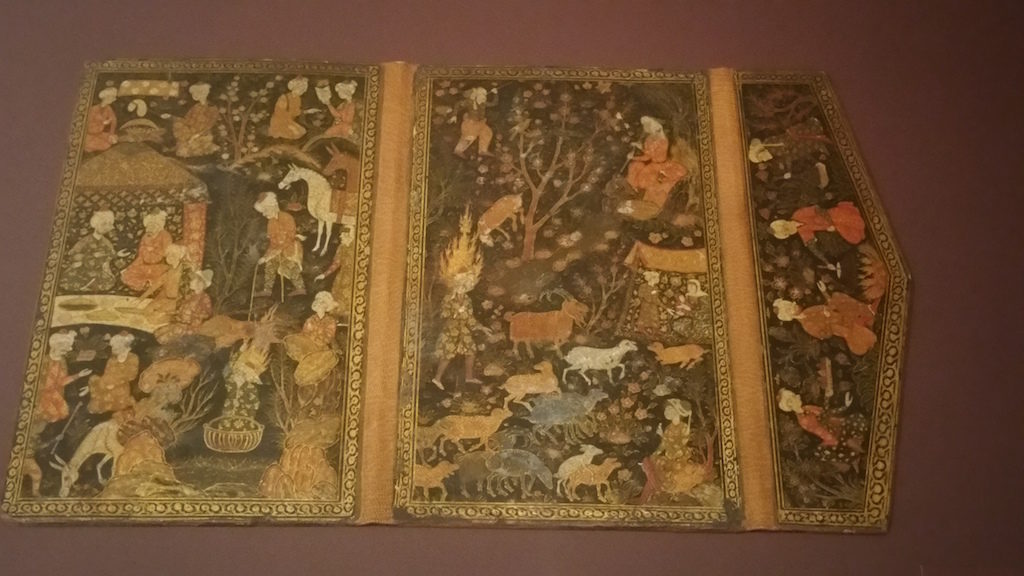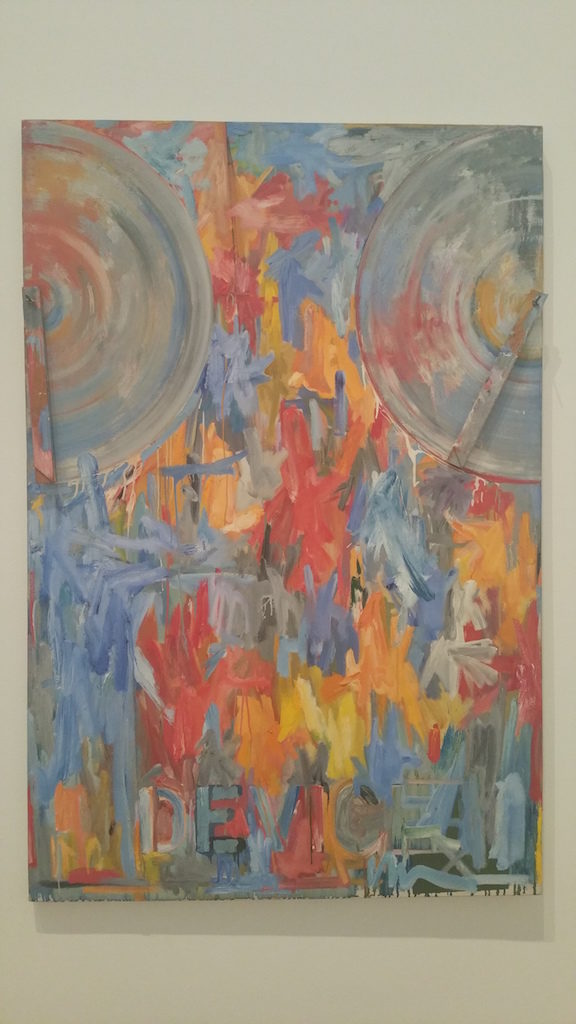 Yesterday morning I went to the Dallas Museum of Art.
Yesterday morning I went to the Dallas Museum of Art.
I didn’t want to be there. I wanted to be home, in bed, curled up in a ball, under the covers, crying. But a few days prior I had promised to give someone a ride downtown so he could take the computer-based GRE (what even is that) at a testing center in the Plaza of the Americas building on Pearl Street. That area of downtown is a few blocks east of the streets that were cordoned off yesterday, so getting to the location wasn’t really the problem – though I didn’t think it would be easy, with so much downtown traffic rerouted. The problem was that I didn’t want to go anywhere, or do anything.
Instead, I kept my promise. I drove down to 700 Pearl Street, parked in the parking garage, went along with my passenger while he checked in at the testing center, made arrangements to meet up after he was done, and then sorted out how to spend the next few hours.
And so I decided to go to the museum. I walked the few blocks from Pearl and San Jacinto down to the DMA. On the way, I saw five, maybe six other pedestrians total – for blocks. There was little cross-traffic, and the streets were quiet. I heard the carillon of First Baptist Dallas chiming on the hour, and I heard police sirens in the distance. But the usual bustle and hum and clatter of downtown was missing. And though I am most at home in the quiet of the countryside, and prefer wide open spaces to city views, I did miss that lively noise
I got to the museum just after ten, but it doesn’t open until 11. So I walked down to the end of Harwood Street and waited at the crosswalk, though no cars were coming, until I got the green light to cross into Klyde Warren Park. It was all but empty. No young families, no dog walkers, no picnicking visitors. There were maybe four or five other pedestrians in the whole park besides me, plus a few uniformed park maintenance workers. But there was nothing to maintain but a somber silence. I sat at a little bistro table in the shade and waited for the museum to open. To the west, a white helicopter hovered in place over the cordoned-off streets of the crime scene. 
A few minutes after 11, I crossed the park green, crossed the street again. (And again, though there was no traffic, I waited for the light to turn — proof enough, if proof were needed, that I am not much of a city girl.) At the entrance to the Dallas Museum of Art, I swapped out my sunglasses for my indoor specs. And then I went inside.
And life was there.
Right inside the doorway there was a little gaggle of very young schoolchildren standing with their chaperones, waiting to begin their museum outing. Beyond that small circle of small, smiling faces, there were three or four people standing at the membership desk, making one sort of inquiry or another. And just beyond the membership desk, a few older schoolchildren that were part of a field trip group – from a city summer camp, maybe, or a YMCA activity – were laughing and talking excitedly together as they scurried up the main hallway of the museum, their art scavenger hunt checklists clutched in their hands.
The first gallery I stepped into was holding a special exhibit, “Spirit and Matter,” featuring treasures of Islamic art. There I saw ceramic ware, and metal work, and incredible textiles, and of course stunning illuminated manuscripts, each single page of calligraphy and ornament a work of art in its own right. Here is a picture of my favorite item from that exhibit: a book cover depicting Joseph’s rescue from the well and his reign in Egypt.
The exhibit was not crowded, but it was busy – several people in each small room, standing before each item on display, reading the inscriptions, admiring the work of hands long turned back into dust.
 Next to that gallery was another temporary exhibit – “Vermeer Suite: Music in 17th Century Dutch Painting.” The centerpiece of the exhibit was Vermeer’s “Young Woman Seated at a Virginal,” and around the walls on either side were several works showing musicians and their instruments of art. I was stunned by how small these canvases were – as small as single windowpanes of leaded glass, and just as suffused with light.
Next to that gallery was another temporary exhibit – “Vermeer Suite: Music in 17th Century Dutch Painting.” The centerpiece of the exhibit was Vermeer’s “Young Woman Seated at a Virginal,” and around the walls on either side were several works showing musicians and their instruments of art. I was stunned by how small these canvases were – as small as single windowpanes of leaded glass, and just as suffused with light.
From there I went through a gallery where some of the masterpieces of modernism were on display – “Device” by Jasper Johns, breaking forth bright and lively, and the toothsome “Summer” of Philip Guston. Viewing the works alongside me were a couple of families – one family of five or six were speaking German – and what looked to be some high school students, and a few other solo wanderers like me.
Yesterday I saw what people often come to the DMA to see – Picasso and Monet, Rodin, Gauguin, Pisarro, Mondrian, Van Gogh. There they all were, silent and serene, just down the hall from the Roman busts and the Grecian urns and – glory of glories – an ancient victor’s golden crown.
 But the real glories of the Dallas Museum of Art were manifested in the people walking through those galleries alongside me: women and men and children and elderly people, college students, security guards, sketch artists, docents, interns, guides, tourists, suburbanites, city dwellers, folks of different races and colors and religions, there together by chance and choice, souls sheltered and nurtured by a place of beauty and peace. Human voices sounded there — fewer than usual, quieter than usual — and human life was precious there. It should be so precious, and so peaceful, everywhere.
But the real glories of the Dallas Museum of Art were manifested in the people walking through those galleries alongside me: women and men and children and elderly people, college students, security guards, sketch artists, docents, interns, guides, tourists, suburbanites, city dwellers, folks of different races and colors and religions, there together by chance and choice, souls sheltered and nurtured by a place of beauty and peace. Human voices sounded there — fewer than usual, quieter than usual — and human life was precious there. It should be so precious, and so peaceful, everywhere.
For we bear this treasure in earthen vessels…
After I had spent a couple of hours inside the museum, I went and grabbed some lunch at the outdoor café. For most of the time, I had the whole patio to myself. After that I walked again through Klyde Warren park. There weren’t many more people there than had been in the park before, but I did see a couple of families with little children at the playground, and one or two of the food trucks, which would usually have been crazy-busy, had three or four customers.
There was nothing to do but head back to the Plaza of the Americas. So back I walked, crossing dutifully with the lights through intersections all but empty of cars. As it turns out, my timing was good. I hadn’t been inside the atrium of the Plaza for more than a minute or two when I got a message from my passenger. He was done with the GRE and ready to go.
So we got in the car and headed back up the freeway.
When I got home, I got into bed, and curled up in a ball, and pulled the covers up under my chin, and turned on the news. I saw Rep. John Lewis speaking. He said, “We must learn to live together as brothers and sisters. If not, we will perish as fools.”
And then I cried.

5 Thoughts on this Post
S-USIH Comment Policy
We ask that those who participate in the discussions generated in the Comments section do so with the same decorum as they would in any other academic setting or context. Since the USIH bloggers write under our real names, we would prefer that our commenters also identify themselves by their real name. As our primary goal is to stimulate and engage in fruitful and productive discussion, ad hominem attacks (personal or professional), unnecessary insults, and/or mean-spiritedness have no place in the USIH Blog’s Comments section. Therefore, we reserve the right to remove any comments that contain any of the above and/or are not intended to further the discussion of the topic of the post. We welcome suggestions for corrections to any of our posts. As the official blog of the Society of US Intellectual History, we hope to foster a diverse community of scholars and readers who engage with one another in discussions of US intellectual history, broadly understood.
This is a deeply moving post, it speaks to how every space–private and public–should be a sanctuary. Like the poet Danez Smith writes in the poem “summer, everywhere”:
“point to whatever you please
& call it church, home, or sweet love.”
An important fact about the Dallas Museum of Art is that it’s free and thus it represents how these spaces need to operate beyond economic interest–beyond capital. This question connects indirectly with that which goes unnamed in the post: the increasing racial conflict and inequality that the recent spurts of violence have magnified. Can we speak of law enforcement–or, for that matter, constructs like white people, blackness–without addressing their role, functions, and effects in U.S.–and global–capitalism? I don’t think so. So, yes, to the “peaceful” recognition of the “preciousness” of all “human life,” but also to the dissolution of socioeconomic inequality, which, needless to say, affects people of color disproportionately. Peace, out.
Oops, Smith’s poem is titled “summer, somewhere,” not “everywhere.”
Yes to all that, Kahlil. Just within the last few years DMA moved to free admission, and that was a really good move for the larger community. Art, beauty, the space to enjoy these things, the opportunity to learn more about them –these should be available and accessible to all. More generally though, as you are suggesting above, free admission to museums doesn’t help much unless everyone in the community is free to move about through those lovely, peaceful spaces in perfect safety, in confidence, without alienation, without fear.
Here in the UK, the coverage of Dallas has been ample. The day after, a friend asked why all the cops America seemed to still be white. He was, I think, reacting to the fact that the four policemen who were slain by the shooter were all white. But the cruel irony is that the Dallas Chief of Police is an African American and apparently a reformer. The coverage of the actual shooting–with the officers moving from pillar to post, crouching behind walls, looking up and around to locate how many “shooters” there were, all punctuated by sporadic gunfire—revealed an Asian American plus several African American policemen moving in. There is something about the randomness of the actual outbreak of violent shootings that is disorienting and makes it seem like they can happen any- and everywhere throughout the country. And perhaps that is true. The answer isn’t that reforms don’t work. But we are never sure what will. This made your reflections on the days after–in the park and in the Museum– all the more powerful and poignant, Lora. Thank you for posting it.
What a great post. In the next few days, after I’ve had a chance to read it again, I’m going to forward it to someone I know (a curator in a museum not too dissimilar to the DMA) who I’m sure will appreciate it.